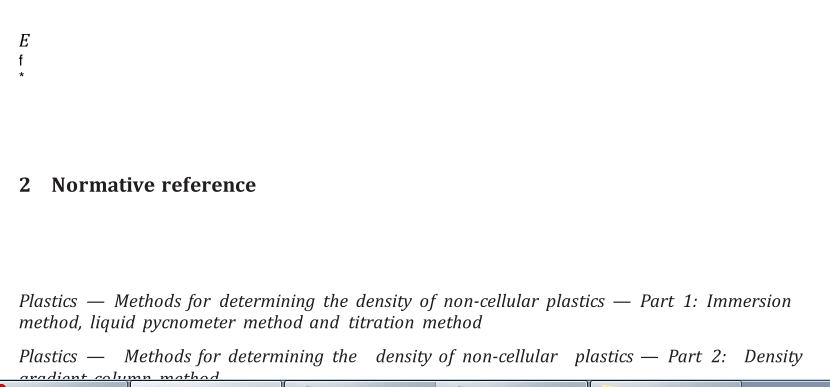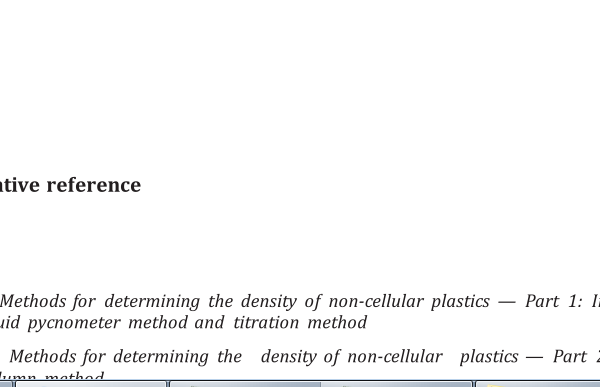ISO 6721-3:2021 pdf download – Plastics — Determination of dynamic mechanical properties — Flexural vibration — Resonance- curve method.
6.2 Shape and dimensions Specimens shall be rectangular bars or strips thick enough to give sufficient bending stiffness, which is critical for the resonance frequency. On the other hand, the thickness shall be sufficiently small when compared to the wavelength of the bending vibration. The specimen thickness shall also be limited to avoid effects due to shear deformation and rotatory inertia if accurate values of E ′ are required. Length-to-thickness ratios of less than 50 shall be avoided if values of E ′ are required to be accurate to within ±5 %, from measurements up to the sixth order of homogeneous, isotropic specimens. The thickness of the layers of a multilayer system will depend on the purpose for which the system was designed. When comparing various systems by the bending-vibration test, the preferred ratio of the mass of the plastic layer to the mass of the basic sheet material is 1:5. The width of the specimens shall be less than one-half of the wavelength used in order to avoid lateral resonance vibrations. A width of 10 mm should be suitable in most cases. The length of the specimens depends on the desired frequency. For specimens clamped at one end, the length shall be sufficiently large to avoid the clamp influencing the vibration significantly. A free length of 180 mm should be used. If the specimen is not clamped, its length shall be 150 mm. 6.3 Preparation According to ISO 6721-1. Small, thin, light steel plates shall be adhesively bonded to the specimens near their ends to allow excitation and detection of the vibrations by means of electromagnetic transducers. To avoid errors in E ′ greater than 4 %, the ratio of the added mass to the specimen mass shall not exceed 1 %. To avoid the steel plates causing additional stiffness, they shall not extend along more than 2 % of the length of the specimen. The distance between the steel plates shall be large enough to avoid cross-talk between exciter and detector. Multilayer specimens shall be fabricated with the thickness and by the production techniques to be used in the projected end-use. For example, for a plastic material on steel sheet, the plastic can be applied to the metal by spraying, as a mastic or as an adhesively bonded sheet. 7 Number of test specimens According to ISO 6721-1. 8 Conditioning According to ISO 6721-1. 9 Procedure 9.1 Test atmosphere According to ISO 6721-1. 9.2 Measurement of specimen cross-section According to ISO 6721-1. 9.3 Measurement of specimen density Measure the density of the test specimen, ρ (kg m ) to an accuracy of ±0,5 % using one of the procedures described in ISO 1183-1 or ISO 1183-2 or ISO 1183-3.
ISO 6721-3:2021 pdf download – Plastics — Determination of dynamic mechanical properties — Flexural vibration — Resonance- curve method






